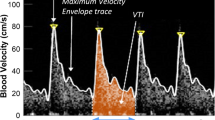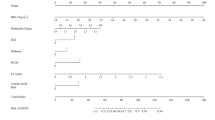Abstract
The haemodynamics of the uterine arteries and myometrium were assessed using Doppler ultrasound in forty consecutive patients requiring treatment for invasive mole and choriocarcinoma. The investigations were performed prior to the commencement of chemotherapy and the subjects followed prospectively. The Doppler waveforms from the uterine arteries were analysed using the pulsatility index. It was found that patients with a pulsatility index of 1.1 or less were significantly more likely to develop drug resistance than those with a higher value (P < 0.04). There was no significant association between the pulsatility index and metastatic disease or uterine bleeding. Five out of eight patients who developed drug resistance could have avoided initial inadequate treatment if the Doppler findings were included in the scoring system for selecting chemotherapy for these tumours. It can be concluded that assessment of the uterine arteries using the pulsatility index prior to the treatment of patients with invasive mole and choriocarcinoma is of help in predicting those who will develop drug resistance.
This is a preview of subscription content, access via your institution
Access options
Subscribe to this journal
Receive 24 print issues and online access
$259.00 per year
only $10.79 per issue
Buy this article
- Purchase on SpringerLink
- Instant access to full article PDF
Prices may be subject to local taxes which are calculated during checkout
Similar content being viewed by others
Author information
Authors and Affiliations
Rights and permissions
About this article
Cite this article
Long, M., Boultbee, J., Langley, R. et al. Doppler assessment of the uterine circulation and the clinical behaviour of gestational trophoblastic tumours requiring chemotherapy. Br J Cancer 66, 883–887 (1992). https://doi.org/10.1038/bjc.1992.379
Issue date:
DOI: https://doi.org/10.1038/bjc.1992.379



